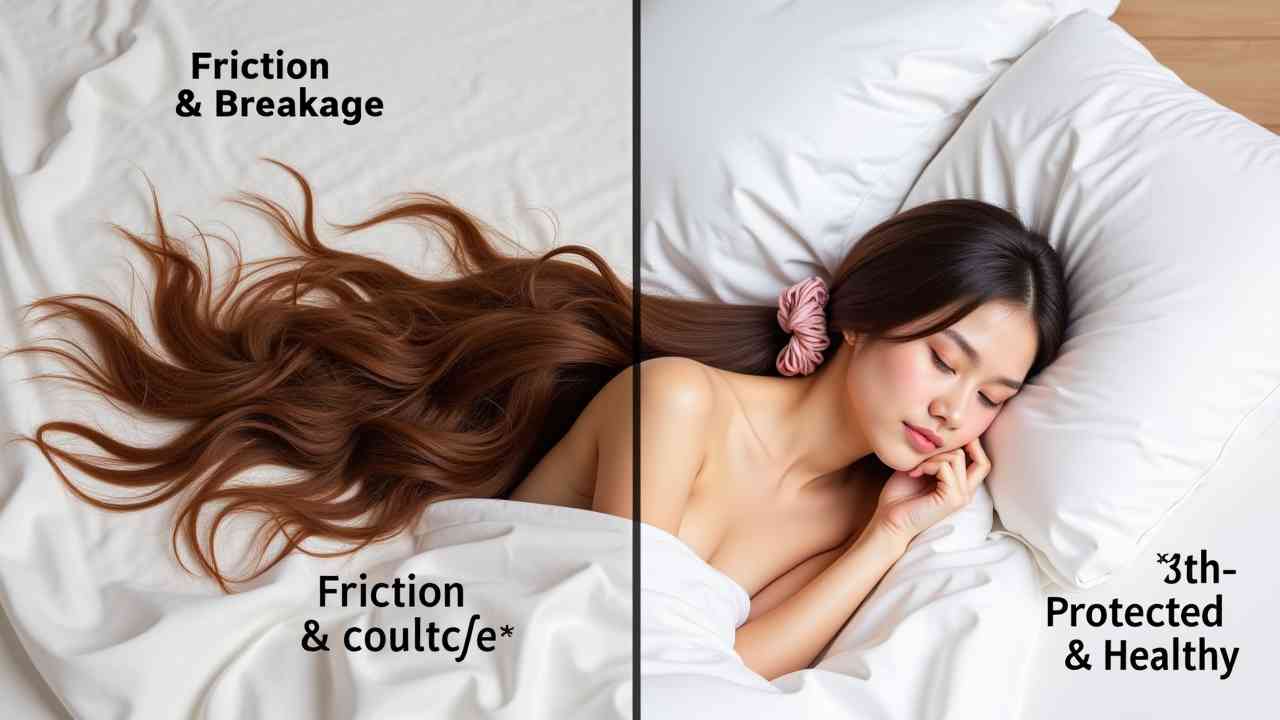
😴 The Best Protective Hairstyles for Sleeping (A Guide to Healthy Hair)
💤 A Guide to the Best Protective Hairstyles for Sleeping (Wake Up to Healthier Hair!) 💤
You spend a lot of time and effort on your hair care routine. You use great shampoos, conditioners, and styling products. But if you are not protecting your hair while you sleep, you could be undoing all your hard work. Tossing and turning on a cotton pillowcase can cause friction, leading to tangles, frizz, and breakage.
The good news is, a simple nighttime routine can make a world of difference. Using protective hairstyles for sleeping is one of the easiest and most effective ways to maintain the health and beauty of your hair. This is especially important as the cool, dry autumn air here in Bursa can make hair more prone to dryness and breakage. 🍂
This guide will show you the best and simplest styles and tools to use. Let's get you on the path to waking up with smoother, healthier hair every morning. ✅
🤔 First, Why is Protecting Your Hair at Night So Important?
The main enemy of your hair at night is friction. When you move around in your sleep, your hair rubs against your pillowcase. A traditional cotton pillowcase has a rough texture that can rough up the hair cuticle. This leads to several problems:
- Breakage and Split Ends: The friction can cause weak points in the hair shaft, leading to breakage.
- Tangles and Knots: The rubbing can create a tangled mess by morning, which leads to more breakage when you try to brush it out.
- Frizz: The rough texture lifts the hair cuticle, causing frizz.
- Moisture Loss: Cotton is very absorbent. It can actually pull moisture out of your hair, leaving it dry and brittle.
✅ What Are the Best and Easiest Protective Hairstyles?
The goal of a sleeping hairstyle is to keep your hair contained and minimize friction. The key word is always loose. You should never tie your hair up too tightly, as this can cause tension and breakage at the roots.
1. The Classic Loose Braid
A simple, loose three-strand braid is a fantastic option. It keeps all your hair neatly contained, preventing tangles. It can also give you beautiful, heatless waves in the morning. Secure the end with a gentle, soft hair tie.
2. The High, Loose Bun (or 'Pineapple')
This is a great style, especially for those with long or curly hair. Gather all your hair into a very loose bun right on the top of your head. This keeps your hair off your neck and prevents you from rolling onto it. For curly hair, this is called a "pineapple" and it helps to preserve your curl pattern.
3. The Simple Twist
For a quicker option, you can simply gather your hair into a low ponytail and then twist it into a loose rope. This is less secure than a braid but still better than leaving your hair loose.
⭐ What Are the Most Important Tools for Hair Protection?
The hairstyle is only one part of the equation. Using the right accessories is a true game-changer for protective hairstyles for sleeping.
1. Why is a Silk or Satin Pillowcase the #1 Upgrade?
If you do one thing for your hair, it should be this. Switching from a cotton pillowcase to a silk or satin one is a night-and-day difference. These materials have a smooth, slippery surface. Your hair glides over them with almost no friction. This dramatically reduces tangles, frizz, and breakage.
2. What about a Bonnet or Scarf?
A silk or satin bonnet, scarf, or cap is another excellent option. It provides all the benefits of a silk pillowcase while also keeping your hairstyle perfectly in place. It is a fantastic choice for protecting intricate styles or very curly hair.
3. What Kind of Hair Tie Should You Use?
Avoid tight, traditional elastic hair ties with a metal clasp. These are a major cause of breakage. Instead, use a hair tie that is designed to be gentle. The best choices are silk or satin scrunchies or a spiral (telephone cord) hair tie. ✨